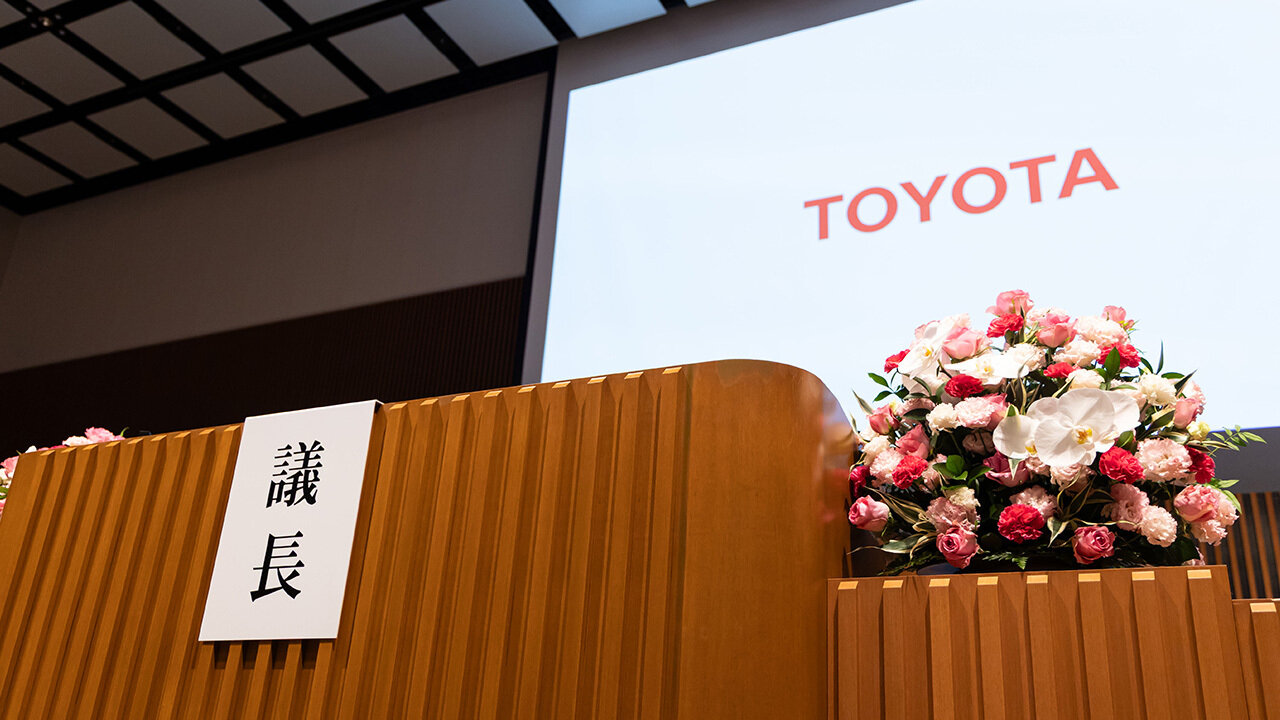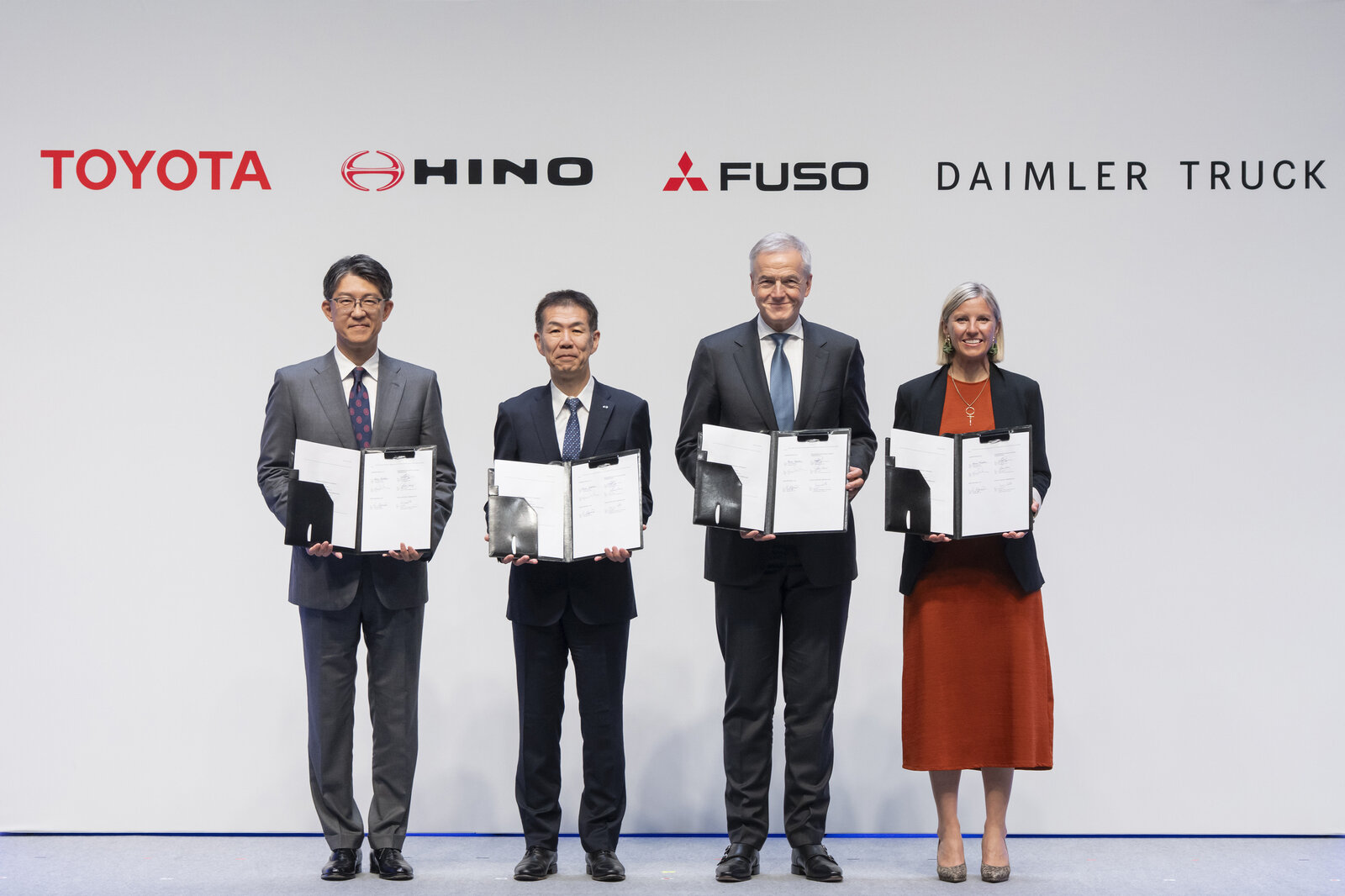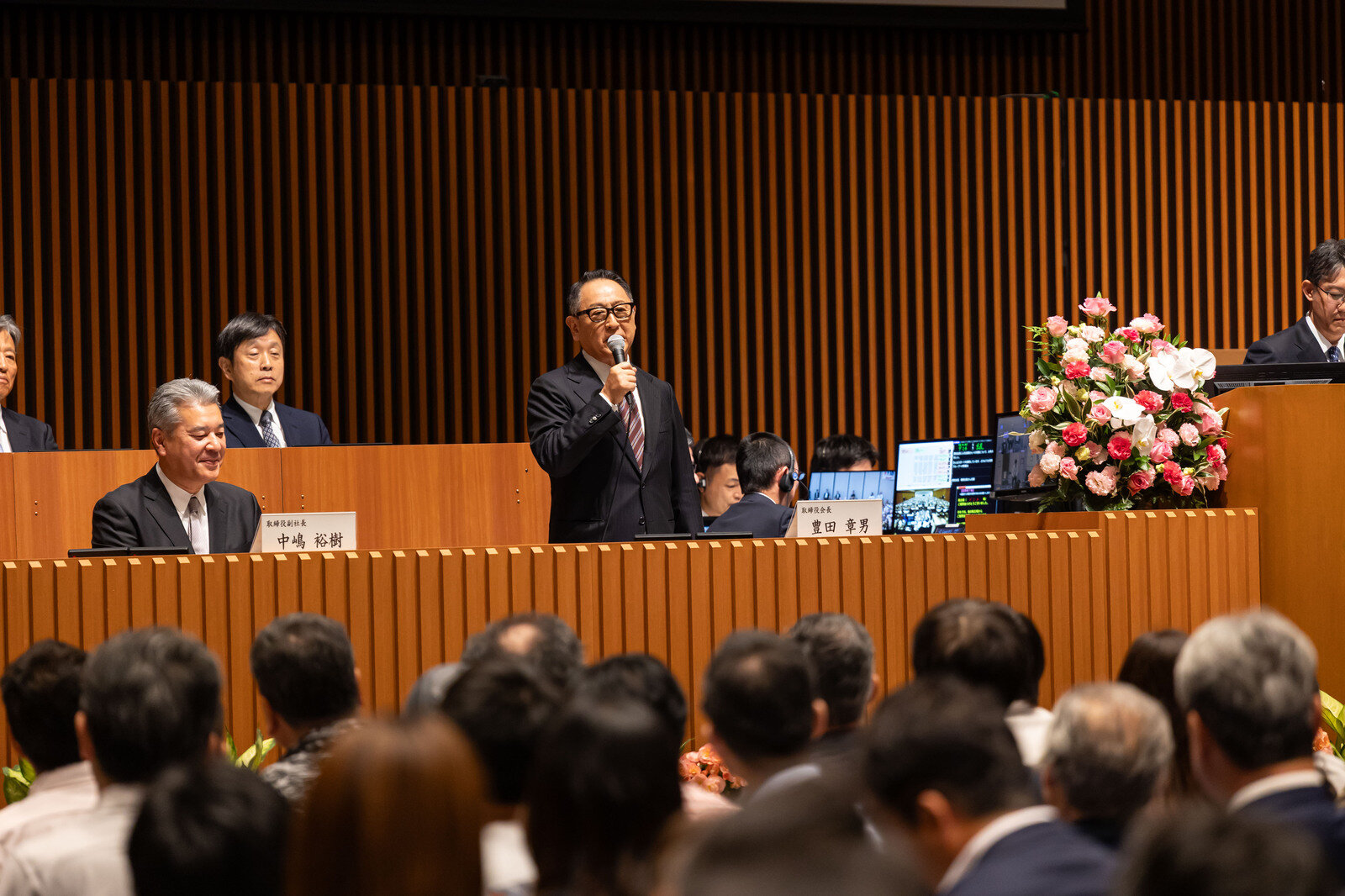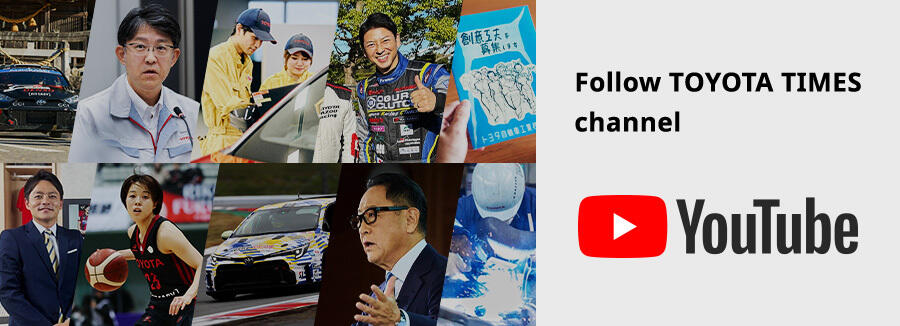
Following the recent announcement of a merger between Mitsubishi Fuso and Hino, at Toyota's General Shareholders' Meeting Chairman Akio Toyoda shared his impressions of former Daimler Truck CEO Martin Daum. What did Chairman Toyoda see in their fateful encounter?

Toyota Motor Corporation’s General Shareholders’ Meeting was held on June 12 at the company’s headquarters in Toyota City, Aichi.
The company’s leadership fielded 13 questions from the 6,752 attendees, on topics ranging widely from workplace culture reforms to the state of progress in all-solid-state batteries.
Among them were some asking about the relationship between Toyota and Hino Motors following the latter’s recently announced merger with Mitsubishi Fuso Truck and Bus.
On June 10, definitive agreements were signed between the merging pair and their respective parent companies, Toyota and Daimler Truck.

At the press conference announcing the move, President Koji Sato made the following comment:
“Two and a half years ago, Daimler Truck’s then-CEO Martin Daum and Toyota’s then-President Akio Toyoda began this collaboration based on a shared vision and sense of values.”
At the general meeting, Vice President Hiroki Nakajima outlined the history of the Hino-Toyota alliance and the truck business within Toyota. Chairman Toyoda then shared his thoughts on Hino and the truck business, as well as his first meeting with former CEO Daum.
Let’s start with Chairman Toyoda’s remarks.
Betting on truck love
Chairman Toyoda

Our 1966 joint statement reads:
“Harnessing their unique characteristics, both companies will be responsible for managing operations.”
However, one thing has always bugged me: I don’t know much about trucks.
I call myself a carmaker, and I know about cars, but the truth is that I was unschooled in the way of trucks. So rather than taking on management responsibilities, I wrestled with the question of how Toyota could best support Hino to enable Japan’s four truck manufacturers—which include Isuzu Motors, UD Trucks, and Mitsubishi Fuso—to shine.
Then Daimler approached us.
My original impression of Daimler was that they wanted to take control and turn all the other brands into Daimler.
However, when I met Mr. Daum, he was nothing like that. He struck me as a genuine “truck guy.”
And when I asked him what would become of the two brands, he told me, “Of course, we want to keep Hino and Mitsubishi Fuso going.”

I decided to go all in, and we continued negotiating. Backed by the efforts of Mitsubishi Fuso and Hino, I feel we accomplished a major private-sector-led reorganization of Japan’s four truck manufacturers, effectively creating two groups.
The fact that we were able to make this happen as a private initiative reflects the resolute commitment of each company.
At Toyota, we also have another company, CJPT, which collaborates with Daimler to develop CASE technologies. We are likewise working with Isuzu, Volvo, and UD to build all kinds of commercial vehicles, cooperating and competing as needed to strengthen our Japanese coalition.
Vice President Nakajima briefly retraced the history of Toyota’s business alliance with Hino, which dates back to 1966. He explained that, while the two companies have collaborated on compact passenger cars, the truck business was left to Hino. “Our potential involvement is very limited, especially in heavy-duty trucks, where we have zero expertise or experience,” said Nakajima.
It was against this backdrop that Daimler proposed a partnership. Vice President Nakajima recounted the first meeting between Chairman Toyoda (then Toyota president) and former CEO Daum.

